#1956 Porsche
Explore tagged Tumblr posts
Photo
Detail of a Porsche 356 A 1500 GS Carrera GT Speedster 1956 Деталь автомобиля Порше 356 A 1500 ГС Каррера ГТ Спидстер 1956 г. Airows – 20 Gorgeous Photos of a 1956 Porsche 356A Carrera GS Speedster

Porsche Roadster
#Porsche#Porsche 356 A#Porsche 356 A 1500 GS Carrera GT Speedster 1956#1956 Porsche#Carrera#Speedster#GT Speedster#GS Carrera#автомобиль#Порше#Каррера#Спидстер#Auto#Oldsmobile#vintage cars#classic cars#luxury cars#dream cars#roadster#oldsmobile#black#schwarz#черное#noir
631 notes
·
View notes
Text




Porsche 550A Spyder, 1956. The 550 was a mid-engined race car produced by Porsche between 1953 and 1958 though only 90 were made. It was an incredibly successful racing car, winning the Nurburgring Eifel Race in May 1953 on it's first outing, and going on to win its class in the 24 Hours of Le Mans, the Mille Miglia and the Carrera Panamericana.
295 notes
·
View notes
Text
Do your math: 1956 Porsche 356A Coupé
As the ad states, it’s rare to come across a 1956 356A in restorable condition, but it’s also true that this car requires a lot of work—a lot of work means a very high budget. We know this well because we recently restored a 1965 Alfa Romeo in similar condition, thinking it would still be worth it, only to discover the financial disaster that ensued. But in the end, it’s also a lesson for the…
1 note
·
View note
Text




On the move
4 notes
·
View notes
Text

Porsche 356 Speedster 1956. - source Cars & Motorbikes Stars of the Golden era.
561 notes
·
View notes
Text







1956 Porsche 356 A 1600 Speedster
36 notes
·
View notes
Text

The 1965 Lotus-Ford that Jimmy Clark drove to the 1965 Indianapolis 500 Championship.


Jim Clark was a 2 time F1 World Champion and Indy 500 Champion
Jim Clark died because he was in the wrong place at the wrong time. On 7 April 1968, Clark should have been at Brands Hatch giving the DFV-engined Ford F3L its debut in the BOAC 500 sports car race. But he had been double-booked that weekend, and instead spent it at Hockenheim in Germany for a big European F3 meeting where Lotus was fielding its works team, to oblige sponsors Firestone.
Clark was a sheep farmer from the Scottish Borders who had started competing in sprints in his Sunbeam Mk3 saloon in 1956. He won his first event. He raced friend Ian Scott Watson’s DKW Sonderklasse and Porsche 356 1600 Super before graduating to a Jaguar D-type run by the Border Reivers team.
In 1958 Scott Watson bought one of the first Lotus Type 14 Elites, and at the Boxing Day Brands Hatch race meeting Clark had Lotus founder Colin Chapman in his own Elite all but beaten, until a backmarker spun in front of him.
Clark’s smoothness and mechanical sympathy meant he could often get a Lotus to last a race distance where other drivers could not
By 1960 Clark was a Lotus F1 driver, and he won his first championship race at Spa in 1962. It was one of three wins that year, leaving him in contention for the world championship at the final race of the season in South Africa – but his Lotus failed him, and BRM driver Graham Hill was crowned champion.
There was no mistake the following year. Clark won seven of the 10 races in 1963 – the most any driver had won in one season – and took his first world championship win in dominant style.
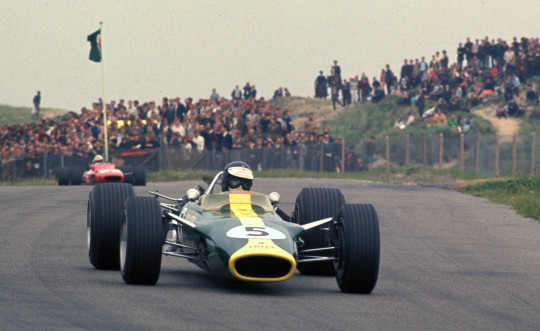

Chapman was renowned for building cars that were as light as possible, but often their reliability was suspect. Clark’s smoothness and mechanical sympathy meant he could often get a Lotus to last a race distance where other drivers could not, but it didn’t always work out: in 1964 a strong of retirements robbed him of the chance to defend his F1 title. He was back in 1965 with the new Lotus 33, and six race wins guaranteed him his second world championship.
Graham Hill joined Lotus for 1967 – typically, Clark insisted they were both paid the same salary – and carried out much of the development work on the new Cosworth DFV engine. It was obvious that the DFV-powered Lotus 49 was the class of the field at its debut race at Zandvoort, so Hill and Clark tossed to decide who would win. Hill won the toss, but his car expired, leaving Clark to win – in a car he had never seen before that weekend.
Clark had immense natural ability: he often struggled to understand why other drivers couldn’t keep up
Arguably his greatest race came in the 49 at Monza later that year when he suffered a puncture while leading. The pit stop to change the tyre left him a lap down but he fought past the leading group to unlap himself, belying some commentators’ opinions that Clark wasn’t a racer, and was only any good when controlling a race from the front. He lapped faster and faster, caught up an entire lap, and passed the front-runners again to re-take the lead. But the epic win was not to be: the Lotus ran out of fuel with a couple of laps to go, and John Surtees won in the ‘Hondola’ RA300.
Clark had immense natural ability: he often struggled to understand why other drivers couldn’t keep up. When he had a big enough lead he would keep himself amused by setting the car up in a big slide for the benefit of trackside photographers. His feel for the car was legendary: driving the Lotus 49 for the first time at Zandvoort in 1967 he was convinced something wasn’t right with the car, though there was nothing obvious amiss. But when Team Lotus tore down the car overnight they found one of the wheel bearings was just starting to fail.
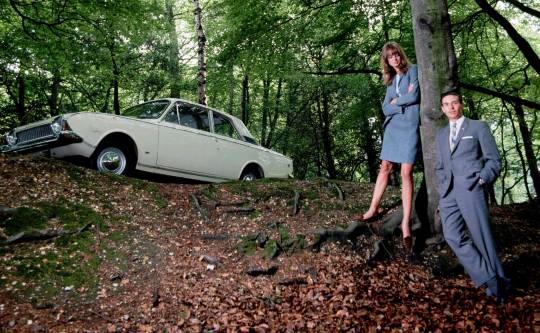
Clark won the first F1 championship race of the 1968 season in South Africa, where he beat Juan Manuel Fangio’s all-time record of 24 world championship Grand Prix victories. He was well-placed to win more F1 races and maybe become champion again in 1968, but then came Hockenheim…
His Lotus 48 F2 car was up against a strong international field and Clark was running eighth after the first four laps. On the fifth lap the Lotus headed uphill out of the stadium section of the course and into the woods, was seen to twitch, and flew off the road into the trees. Though the cause of the accident was never established beyond all doubt, it’s likely that a rear tyre failed, possibly due to debris from a previous incident. The Lotus hit a tree, and Clark died from a broken neck and fractured skull. He was just 32.
The whole motor racing community was numb. At Brands Hatch the news was announced to a stunned crowd. Colin Chapman was so destraught he considered giving up motor racing for good. Chris Amon, one of the greatest drivers of his era, summed up the general mood among the drivers by saying if this could happen to Clark, “What chance have the rest of us got?”
The shockwaves from his death were felt not just in Europe, where Clark was a superstar in F1 and touring car racing, but also in the US. Clark had been denied victory in the Indy 500 in dubious circumstances in 1963 but returned, and dominated the race, in 1965 – becoming the first F1 World Champion to win at the Brickyard.
But for a few quirks of fate, Clark could have been F1 champion 1962-1963-1964-1965-1968 and might even have gone on to race and win in the slicks-and-wings era of the early 1970s, which brought two world titles for the Lotus 72. He was, without doubt, one of the greatest drivers ever to race in F1.
Family and community meant a lot to him: his gravestone in Chirnside lists his occupation as ‘farmer’ before ‘World Champion motor racing driver’.
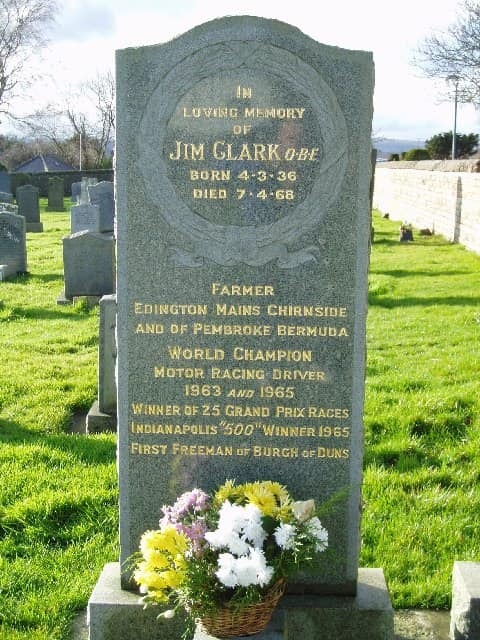
Jim Clark's grave in Chirnside, Scotland.

Jim Clark – winner 1968 Australian Grand Prix at Sandown, Melbourne.

In 1967, Lotus and Cosworth were reshaping the sport of Formula 1 with the assistance of Jim Clark and Graham Hill.

Jim Clark - Lotus 25 - French GP (1965)
French GP, Clermont Ferrand, 27 June 1965 .Winner Jim Clark, Lotus 33 in practice(he raced Lotus 25)
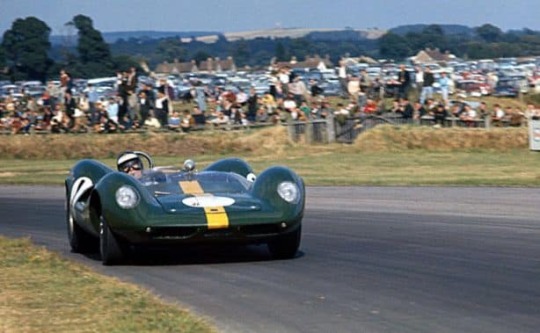
1964 Goodwood TT, Jim Clark, Lotus 30 Ford

The Flying Scotsman Jim Clark
91 notes
·
View notes
Photo
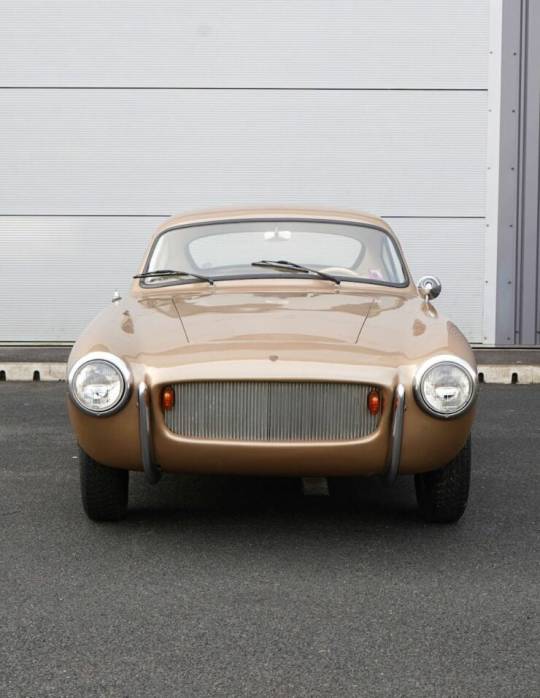
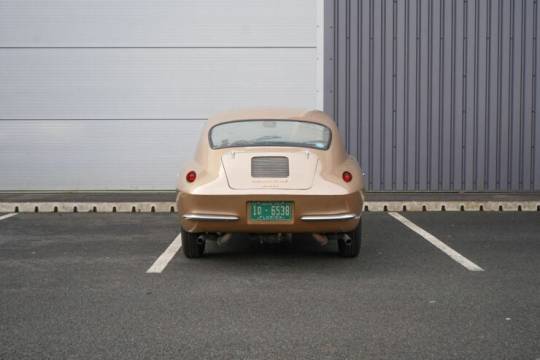

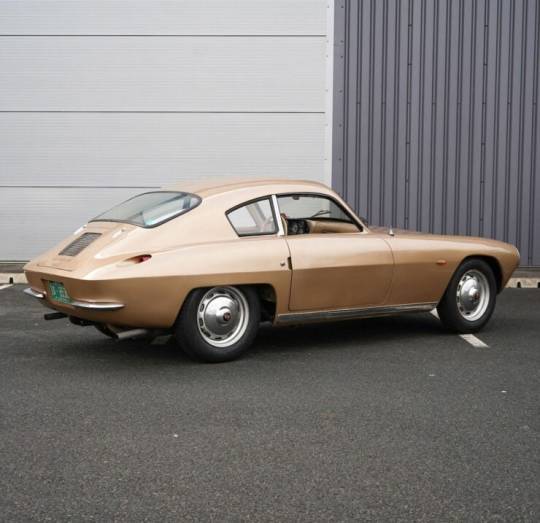

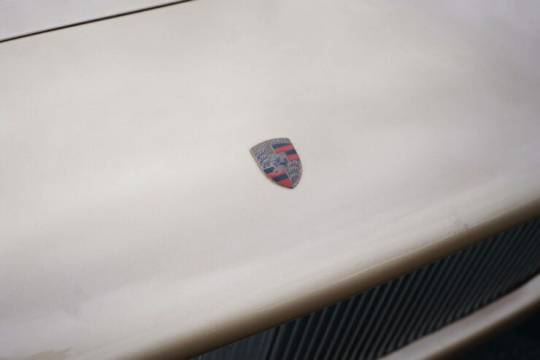
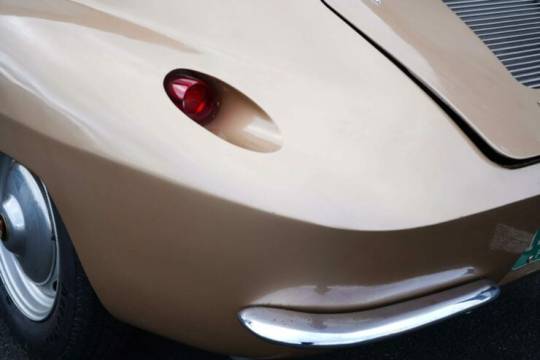
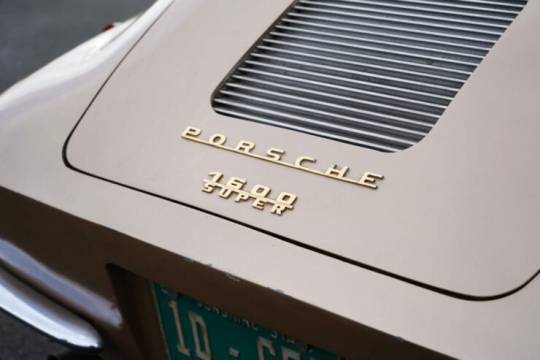
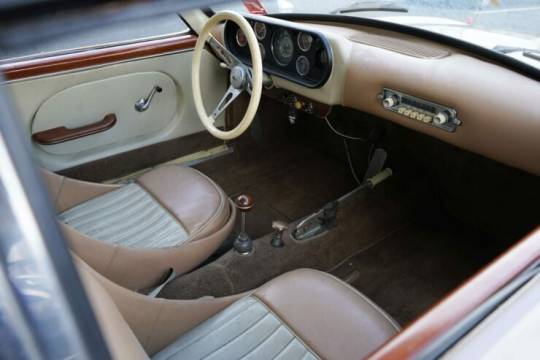

VW-Porsche 356 LaDawri Special
This is the VW-Porsche 356 LaDawri Special, it’s the only one of its kind ever made and up until recently it’s been a “long-lost” mystery car. Images of it would surface from time to time and people would wonder where the car was being hidden, if it still existed, and what its backstory was. La Dawri Coachcraft was founded in British Columbia, Canada by Leslie Albert Dawes. In 1956 the company debuted the La Dawri Cavalier which would be Canada’s first ever fiberglass car. The company name came from combining Leslie Albert Dawes with his business associate Don Wright – resulting in “L. A. Da Wri” or La Dawri.
The car you see here is the only one of its kind, it’s a La Dawri body based on the earlier Victress C2, which is fitted to a Volkswagen Beetle chassis and powered by a Porsche 356 engine.
It’s a great example of the creative automotive chimeras that were being produced in California in the 1950s and 1960s, with builders taking the best aspects of various cars and bolting them all together into new vehicles.
This car is an interesting mix, it includes that aforementioned VW chassis and Porsche 356 engine, with the brakes, suspension, and 15 inch steel wheels also coming from the Porsche. The 4-speed manual gearbox comes from a VW, and the body comes from La Dawri.
117 notes
·
View notes
Text
Scott's World of Tomorrow

It was February 1956, a young Scott Heyward had just turned 16 years old. His father, Duster Heyward of Heyward Oil is about to spoil him.
"Well son taday's yer birthday. What do ya wanna do?"
"Can we go to Disneyland Pa? They have a whole section called Tomorrowland and a race car track called Autopia."
Mr. Heyward smiles as he claps Scott's shoulder.
"Tha's mah boy. Disneyland's gonna be a great client ta have. Can't be runnin no rides without oil."
"Yeah and maybe if they have real cars there I can take some notes for the research department."
Mr. Heyward chuckles as he goes to the phone.
"Ah'll just let yer tutor know yer goin on a field trip. That oughta make 'em happy yer doin yer science project."
"Ok, Pa."
Time Skip
"Alright then son. Ah'm gonna be talk with some a Disney's people. They said some fella named Bob Gurr's gonna be walkin ya through Autopia."
"Wow. Thanks Pa!"
Scott sits down on a bench with his camera and notepad. A young man his 20s approaches him.
"Are you Scott Heyward?"
"Yes. Are you Mr. Gurr?"
"That I am. Just call me Bob today. It's really an honor to have you and father come to the park today."
The two shake hands and start to walk to Tomorrowland.
"Now as you can see, the Moonliner was designed by one of my colleagues, John Hench and of course sponsored by Howard Hughes of Trans World Airlines."
Scott takes some pictures as they walk through the attraction. They get to the Monsanto Hall of Chemistry.
"Are you familiar with Monsanto, Scott?"
"Oh yes. I was only 7 when they had that explosion down in Texas City. Pa sent a crew to bring oil down to the site. He managed to get a deal where we can have a couple ships down at the port."
Bob nods. Eventually they make it to Autopia.
"Now this is what I helped design. I used what I learned from working with Ford."
"You worked with Ford? What did you do?"
"Well I helped design the Lincoln Continental. I published a few books on automotive design and that's what brought Mr. Disney's attention over to me. He wanted me to analyze the chassis for these cars. Originally designed by Hartmann Engineering, they were having issues regarding the ability to be mass produced. Too noisy and smokey with a lot of vibration. Eventually the company dropped out so I was brought on permanently to come up with a different design."
Scott's writing all of this down the best he can. Mr. Gurr's slowly turning into an idol.
"So where did you get the design for the cars? They don't look like anything I've ever seen."
"Take a closer look. If you're familiar with Porsche, I took the idea of their 54 550 Spyder and combined it with the recent custom made Italian Ferraris. Of course the Chevrolet Corvette also served as inspiration."
"Wow."
Bob continues telling his story. Scott listens to every word including everything about engineering he has yet to learn.
"What make are these cars now?"
"Currently these are the Mark II's. I had to fix the chassis so they can accommodate a sturdier, smoother-running engine. We've been getting a lot of youngsters so it was necessary to add booster seats and extensions on the peddles. I just finished a prototype for the Mark III and already started work on the Mark IVs"
"Why? What's wrong with these models?"
"Longevity and ease of repair. With how popular this attraction is getting it's only a matter of time before these cars will need repairing. Every month we're learning something new about what people like and don't like about the car. Just goes to show that even when a product is a success, there's still a lot that needs to be done to perfect it."
Scott writes this down as Bob finishes talking.
"Would you like to ride in one of these, Scott?"
"Yes! I'd love to."
Bob chuckles as they wait in line to ride in one of the cars.
Time Skip
"How was yer trip son?"
"I loved it Pa. Mr. Gurr let me take so many pictures and showed me all of Tomorrowland."
Mr. Heyward smiles as they make their way back to Texas. Scott would recite his notes and Bob's story. His father could only nod along as he never really got into the science side of business.
"Well Ah bet yer science project'll turn out real good."
"Oh yeah Pa. Until science finds a better way, everything needs oil. Even the rockets."
"Thatta boy. Yer gonna be takin Heyward Oil inta space."
Scott smiles and sits back in his seat. He starts to fantasize about making his own world of tomorrow.
AN: Shoutout to @xanatenshi for requesting this story.
Tagging: @mercsandmonsters, @georgefairbrother, @imaginationlast, @hooked-on-elvis, @arrolyn1114,
@teamnefarious, @blighted-star, @ab4eva, @thetaoofzoe, @vintagepresley,
@myradiaz, @jaqueline19997, @kiankiwi, @ahundredlifetime, @mydarlingelvis,
@tupelomiss, @elvispresleywife, @karel-in-wonderland, @tacozebra051, @sillybookmarks,
@dusintv, @velvetelvis, @livelaughelvis, @slayingjd, @anamiad00msday,
@mistyspresley, @i-r-i-n-a-a, @yoooooooh, @southcarolinawoman, @peaceloveelvis,
@squaggleson, and @idk583838.
24 notes
·
View notes
Text

1956 Porsche 356 - Petrolicious
11 notes
·
View notes
Text




La Ferrari Dino 246 GTS. Le véhicule est nommé en l'honneur du fils aîné d'Enzo Ferrari, Dino Ferrari décédé en 1956 à l'âge de 24 ans mort dû à sa maladie. Fondateur en 1947 de la firme automobile Ferrari S.p.A., Enzo Ferrari décidera en hommage de son fils disparu prématurément, il créera cette voiture qui sera produite de 1969 à 1974 et en 3 761 exemplaires, elle sera dessinée dans l'esprit de la Porsche 911. Toutefois, à la base, cette voiture est conçue à cause de l'agacement d'Enzo Ferrari envers le succès commercial des Porsches 911 qui crée de l'ombre à sa gamme de véhicules V12. Elle sera la première voiture Ferrari ayant un moteur central, mais aussi une propulsion lui donnant une tenue de route exemplaire pour l'époque. Son moteur est un V6 de 195 ch, mais restera assez fragile et pointu, à cause, des premières versions à bloc aluminium qui sera remplacé plus tard par des versions à bloc en fonte. Ce moteur sera travaillé par les ingénieurs de Ferrari : Vittorio Jano, Franco Rocchi, Carlo Chiti, mais aussi par Dino Ferrari, donnant ainsi une partie du nom en son honneur à la marque et la voiture.
Constructeur automobile italien et filiale de Ferrari, Dino sera créé par Enzo Ferrari (1898-1988) en souvenir et pour faire hommage à son fils Dino Ferrari (1932-1956). Ainsi, cette firme sera créée dans le but de concevoir et fabriquer une gamme de voitures GT de prestiges et de voitures de course possédant les moteurs V6 Dino et V8 Dino entre 1965 et 1976. Dino Ferrari disparaître précocement en 1956 à l'âge de 24 ans seulement. Ainsi à titre posthume et dans une démarche de mémoire et d'honneur nevers son fils, Enzo baptisera tout les moteurs V6 de sa production les "Dino" et créera cette marque en parralèle des modèles Ferra à moteur V12. Il y aura aussi l'Autodromo Enzo e Dino Ferrari (aussi connu comme le Circuit d'Imola).
Alfredo Ferrari, connu sous le surnom de Dino Ferrari, naîtra lui en 1932 à Modène. Il sera ainsi un ingénieur italien, mais aussi le fils héritié d'Enzo Ferrari. Il suivra dans un premier temps une formation en finance puis fera une formation d'ingénierie mécanique en Suisse. Peut avant sa mort, il travaillera à l'Usine de Maranello avec son père en participant notamment aux conceptions des moteurs Ferrari de l'époque (V12 Colombo en 1947 ; V12 Lapredi en 1950 et V12 Jano en 1956) en particulier sur le moteur V6 "Dino" de 1958 qu'il ne verra jamais fini et mis dans un véhicule.
Source des images : https://frenchcurious.tumblr.com/archive
5 notes
·
View notes
Text
Paint it blue: 1956 Porsche 356A Cabriolet
It’s not easy in our days to find a 356A Cabriolet for restoration that isn’t a mass of rust and still has its original engine, yet here is one. Moreover, this car was born in Aquamarine Metallic, a rather rare color, although it’s evident that over the years, it has undergone several layers of paint, including a flashy yellow that, we must admit, we quite like on this car. The car no longer has…

View On WordPress
2 notes
·
View notes
Text

1956 Robert Morris’s 356 Porsche Speedster art by Artcrafts
Artcrafts Telegram
5 notes
·
View notes


